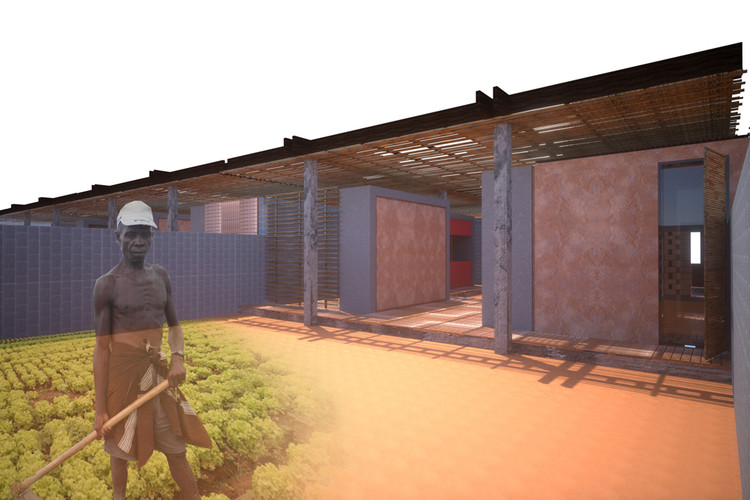
Luanda, which is the capital and largest city in Angola, is located in an area of south-central Africa that is mostly characterized as having poor living conditions for its inhabitants, but is surrounded by the natural beauty of the Atlantic Ocean.
In a competition that encouraged its participants to design a house that foretold the urban future of the city, the collaborative team of Cristina Peres, Diogo Aguiar, Teresa Otto and Tiago Andrade won the 2nd Prize for the International Competition ‘House in Luanda: Patio and Pavillion’ where they responded to what Luanda has to offer and created an idea that would revive society and its economic conditions. More images and description after the break.
Competition

In collaboration with the Luanda Triennale, the Lisbon Architecture Triennale has designed a competition of ideas for the construction of a controlled-cost, single-family dwelling for the city of Luanda. Starting from a very narrow typological characterization, defined on the basis of the specific needs of a city that has ten times the number of inhabitants than it should ideally contain, this competition will make it possible to set up a discussion forum on the urban future of the city.
With an internationally renowned jury, presided over by Álvaro Siza Vieira, it benefits from the participation of Barry Bergdoll (Chief Curator of MoMA), João Luís Carrilho da Graça (Pessoa Prize and Commissioner of the Exhibition), Fernando Mello Franco (Brazilian architect appointed by the Patrons of the Exhibition) and Ângela Mingas (architect appointed by the Luanda Triennale). The shortlist containing the thirty best proposals – out of 599 (!) – submitted to the competition are now presented at the central exhibition of the Lisbon Architecture Triennale at the Electricity Museum.

Project

Patio & Pavilion are the concepts of living that we are given as a reference: the patio that brings the outside into the house and the pavilion that opens the house to the outside. These concepts combined with a reflection on the climate of Luanda are the basis of our house. The pavilion (shadow) represents the first element of the house – a roof to live. This flag would then be a kind of bamboo raft that functions as a filter of intense sunlight while allowing the output of warm air. The patio – central courtyard – allows to see the sky within the house and together with the outside zones of circulation cause also an effective cross-ventilation, soothing environments and facilitating ventilation of compartments.
The construction strategy combines methods and traditional building materials with the present construction industry in Angola, taking advantage of the best that both have to offer for a project of this scale. Thus, this project was also designed to integrate the population in the (auto) construction of their own homes by providing various training courses in the area of the building and fostering the creation of new jobs and business. This involvement in the construction of the house serves not only to reduce costs, but also to give instruction to people in need, affirming it as a project with strong communitarian and social involvement.






















